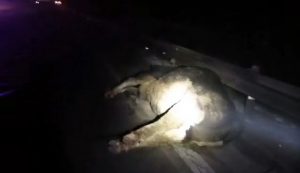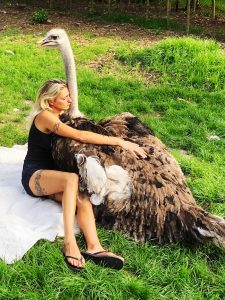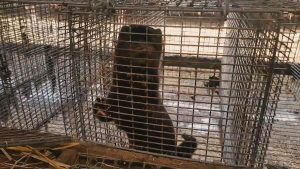This is the historic moment a huge anaconda bit off more than it could chew in Brazil 100 years ago.
Because just as the 17ft long snake was swallowing a massive rodent in the Amazon rainforest, it was killed by a hunter for stuffing as a trophy.
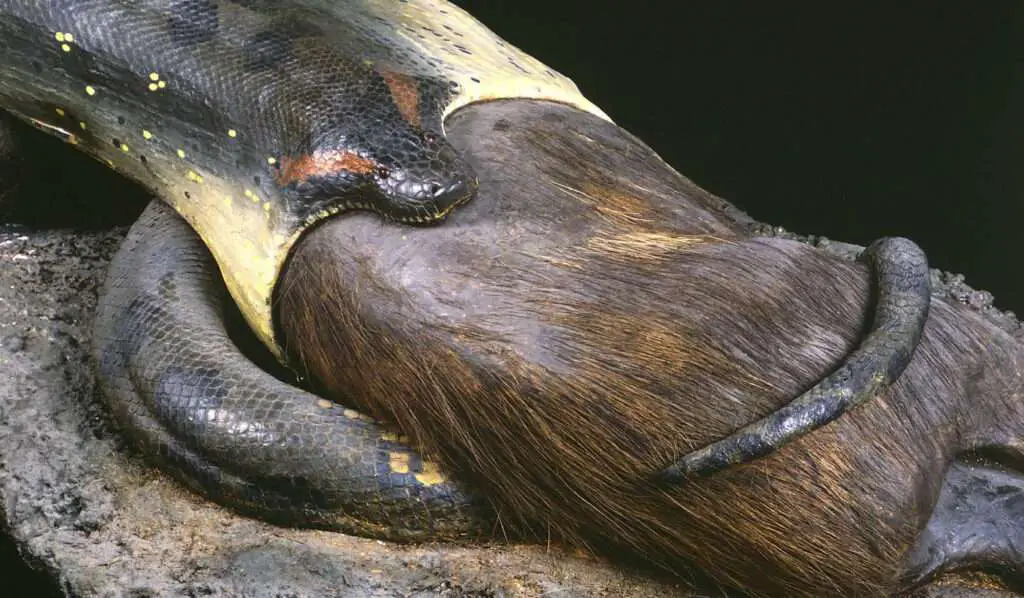
Now the macabre exhibit is to be restored at its current home, the Senckenberg Natural History Museum in Frankfurt, Germany.
The gruesome scene shows the giant snake with its hinge jaws fully extended as it swallows the capybara – a close relative of the guinea pig – head first.
Newsflash obtained a statement from the Senckenberg Society on 31st January saying: “For almost 100 years, the more than five-metre-long snake with its prey has been a favourite of visitors to the Senckenberg Natural History Museum in Frankfurt.
“Tomorrow the reptile will disappear behind the museum scenes: the professional restoration of the aging constrictor begins in Senckenberg’s zoological preparation department.
“The impressive exhibit is expected to return to its old location, but in a newly designed environment, at the end of April.”

The statement added: “The large anaconda, which is only found in South America, has hardly any natural enemies. She is at the top of the food chain, eating anything that can surprise her as a lurking hunter and overwhelm her with her immense physical strength and mass.
“In many places, capybaras, the world’s largest rodents, are the main food source for large constrictors.
“Anacondas are often found in water because the buoyancy in the water allows them to move quickly and hunt.
“The reptile pulls its flexible body over the prey with the help of its highly mobile jaws to devour the meal.”
Dr Brigitte Franzen, Director of the Senckenberg Natural History Museum explained: “The scene depicted in our museum is therefore realistic and accounts for the special fascination of the exhibit.
“An impressive snake can be seen eating a stately mammal. This poses existential questions and stimulates the imagination as to what else the reptile could devour.”
She added: “The animal was killed in Brazil in 1924 by a trophy hunter and collector.
“Senckenberg acquired the snake leather in 1925 from what was then a dealer in natural history and teaching aids in Hamburg for 100 marks, which is the equivalent of around 430 euros today.”
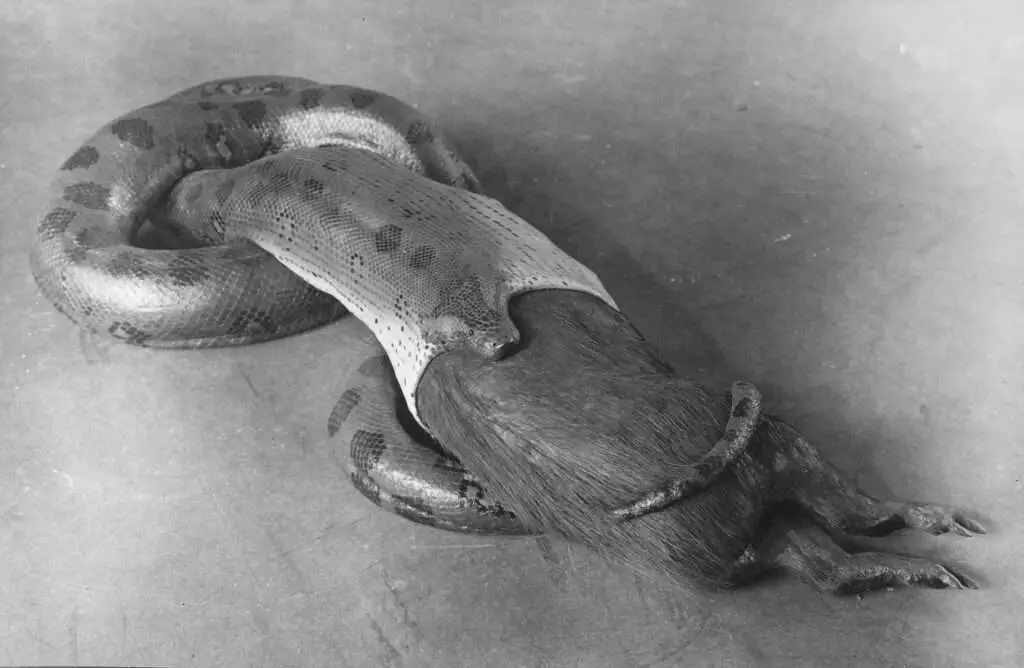
Franzen continued: “The taxidermist at the time – archive documents show that this was very likely Christian Kopp, a specialist in dermoplastics – created the unusual arrangement of the capybara and the anaconda in the swallowing phase in coordination with Senckenberg reptile researchers of the time.
“Now the aging historical dermoplasty is being restored.
“Senckenberg taxidermist Udo Becker will expertly work on them in the museum’s taxidermy workshops.
“First, an inventory is made. Then, among other things, damage is repaired, dust is removed and the coloring is repaired.
“The actual character of the object should be preserved – after all, the snake is a one-off with iconic status and a highlight of our museum.”

